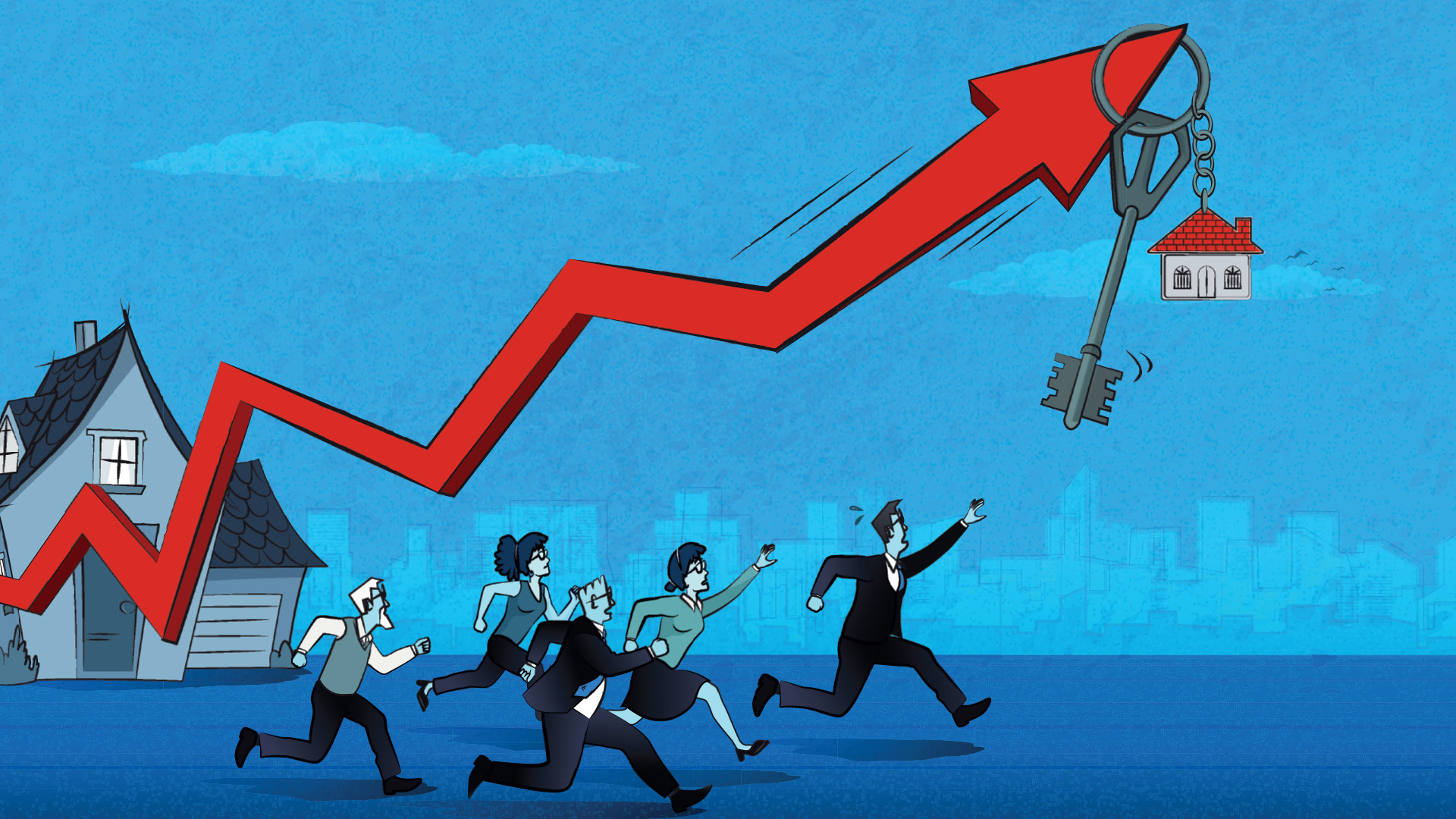
Simone Del Rosario: I can see the Google search now … “Why are mortgage rates going up while the Federal Reserve is cutting rates?”
Prospective home buyers who thought, “I’ll just wait until the Fed starts cutting its interest rate and then I’ll score a better mortgage rate,” they’ve been sorely disappointed.
Since the date of the Fed’s first cut in September, the rate on a 30-year fixed mortgage has gone up nearly a full percentage point, even though the Fed has cut two more times since then.
Why are they going in opposite directions? And will it get worse or better in 2025?
Let’s get into it with Bright MLS Chief Economist Lisa Sturtevant. Lisa for people who’ve been waiting patiently to get into the real estate game, this certainly is a frustrating phenomenon. Why are rates climbing?
Lisa Sturtevant: Yeah, it’s so unusual, isn’t it, people have been saying, Look, I’ll wait until the Fed cuts interest rates and then I’ll get a better mortgage rate. And we’ve seen, as you point out, exactly the opposite. And I think the key reason is that the mortgage market is reacting to expectations as opposed to actions, right? So back in September, what we saw was that mortgage rates had been following from the beginning of July all the way through the rate cut in September, the Fed had been telegraphing that they were going to do that rate cut in September, so it was already baked in. And then in December, while the Federal Reserve cut interest rates, they also released their updated economic projections that said, Look, we’re a little bit more worried about inflation. We’re only going to cut rates twice in 2025 instead of 2024 and then so mortgage rates rose on account of that information, as opposed to the rate cut itself.
Simone Del Rosario: So you talked about that September moment where the 30 year fixed hit around 6% did buyers miss their very brief chance at that low of a mortgage?
Lisa Sturtevant: I think there were a lot of buyers that capitalized on that dip in mortgage rates. Yeah, we did. We saw a lot of uptick in pending sales data. That’s data on the number of people making an offer on a home in September. But I think just as many, if not more, missed out and are waiting to see when their next opportunity will be to get into the market. And it’s never a good time to try and time mortgage rates. But I do think we’re going to see more buyers in this market try and act opportunistically right when they see movement in rates, trying to jump into the market, being ready to act as quickly as they can.
Simone Del Rosario: Yeah, I’ve seen some of the headlines. Mortgage rates could go as high as 8% even as the Fed cuts. Where do you see this heading in 2025?
Lisa Sturtevant: I think I don’t think we’re going to get to 8% for sure. I think we are in a new normal where, you know, in the mid sixes is going to be a good mortgage rate. And for some people, that’s hard to swallow, since during the pandemic, we saw rates down around 3% but actually over the last 50 years, the average rate on a 30 year fixed has been about seven and a half percent. So we’re not high by historic standards. We’re just high by what people had come to expect during the pandemic.
Simone Del Rosario: How do you think the housing market is going to respond to this environment if they’re not seeing the mortgage rate budge? Do you think people are going to see that missed opportunity in September and say, You know what, I’m just going to go ahead and dive in, our price is going to drop because there isn’t a lot of movement. What do you think is going to happen with all of this?
Lisa Sturtevant: Yeah, so I think there’s a couple of things. You know, we’re in such an unusual market, and a lot of the old rules don’t apply. It’s really hard to forecast in the best of times, and now it’s even more challenging. But here’s what I’m thinking. I think that buyers and sellers have re anchored their expectations about mortgage rates. So a few years ago, everyone was waiting for rates to be around three or four, but now consumers are looking back a year, 18 months, remembering rates at 8% or 7% and now six and a half percent seems like a pretty good rate. So I think even if we don’t see rates come down a lot, if we see a downward trend in rates, that’s going to bring buyers in the market, because there’s a lot of unmet demand. Pent up demand that will be unleashed in the market in 2025.
Simone Del Rosario: We’ve been talking about the Fed cut so much as you mentioned. Now the Fed is forecasting just two cuts in 2025 Is it time for us, given the fact that the Fed cut and the rates went up, is it time for us to stop paying attention so much to fed cuts and be looking a lot closer at the 10 year treasury, and what do you anticipate that’s going to do?
Lisa Sturtevant: Oh, yeah, that’s a great that’s a great point. We spent a lot of time wringing our hands and thinking about what the Federal Reserve is going to do, but the Fed is reacting to economic data, and that is what we should be looking at when we want to think about where mortgage rates are headed. Yeah, and so as you point out, the 10 year treasury yield tracks very closely to mortgage rates for a variety of reasons. And so paying attention to what happens to that metric is going to be really important. I would argue we also need to be watching maybe three other metrics. You know, inflation, of course, we saw inflation had come down, but then it reversed for a couple of months there. If inflation continues to reverse, we could see mortgage rates rise. Then we also need to pay attention to the labor market, which has been very strong. If that continues to strengthen, even get stronger, that could also lead to higher rates. And then the last thing is a little bit squishy, but I have to mention it. How people feel is going to make a big difference to the 2025 housing market. So paying attention to those consumer confidence measures, I think, are also going to be really important to projecting where we might be in the months ahead.
Simone Del Rosario: Those are all really good data points for us to be looking at. And I think that, as history has shown us, very recent history, if we’re waiting until the Fed acts, it’s already too late, because the mortgage rate industry has already baked all of that in, so we’ll be looking at those other measures for sure. Bright MLS chief economist, Lisa Sturtevant, thank you so much for your thoughts today.










